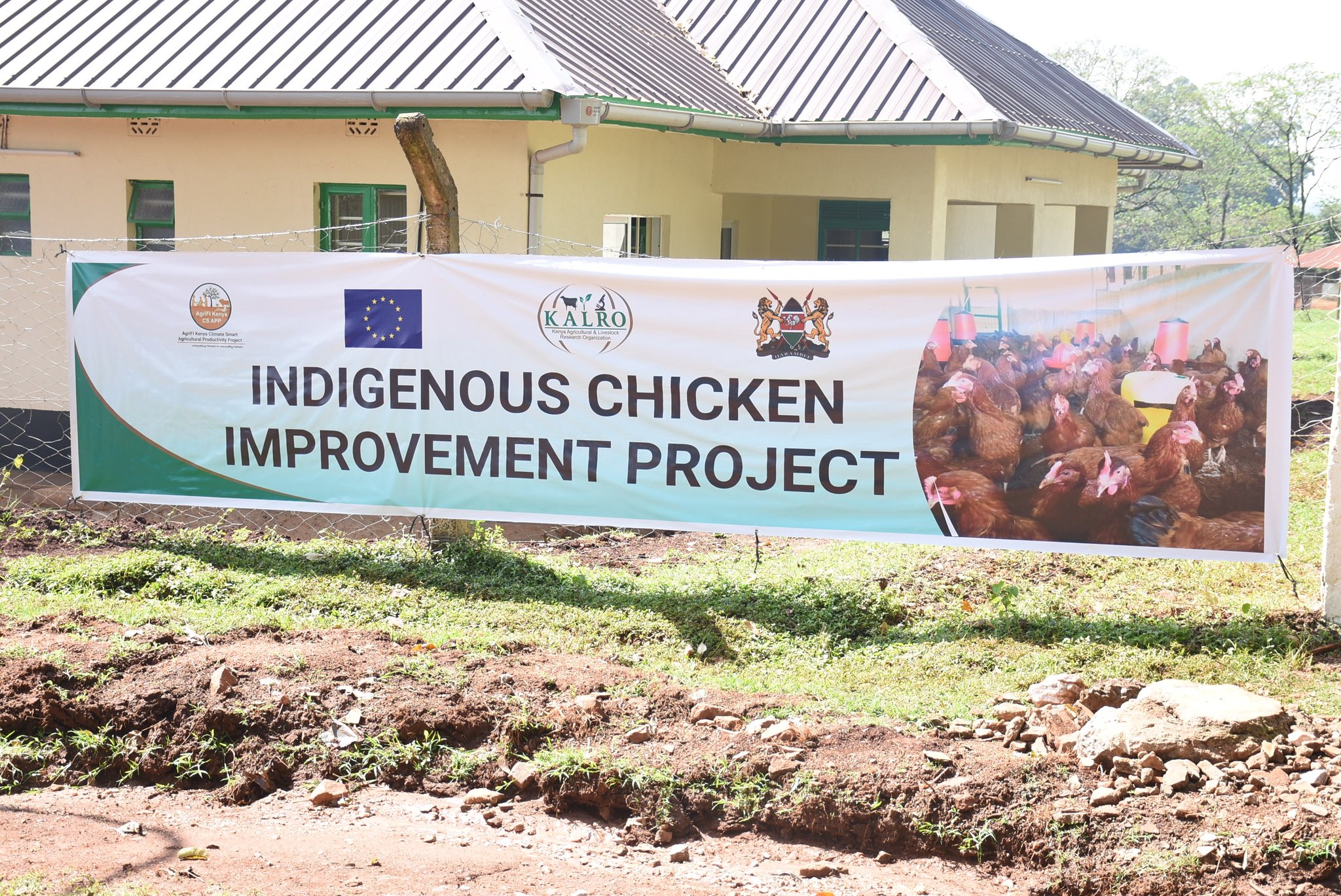
By George Munene
The Kenya Agricultural and Livestock Research Organization (KALRO) today (20th March 2023) opened the KALRO Poultry Breeding and Multiplication House at KALRO’s Non-Ruminant Research institute at Kakamega as well as released the Improved KALRO Chicken KC3 breed line.
The project will benefit an estimated 500,000 small-holder farmers with the potential to become full players in the value chain. The poultry unit at Non-Ruminant Research Institute (NRI) Kakamega consists of over 2,000 breeding flock that produces hatching eggs for the hatchery with a current capacity of 14,800 eggs among other poultry research facilities.
Indigenous chickens are estimated to account for 78 per cent of all poultry in Kenya.
KALRO Kienyeji Indigenous Chickens lay 200-250 eggs a year compared to 80-100 eggs laid by local chickens. The eggs are also up to 20 kilograms larger than those of local chicken.
Related News: Fact sheet on commercial kienyeji chicken management
Related News: Mariakani breeder capitalises on Brahma chicken rarity in Kenya
They also lay their first egg at five months, three months earlier than local chickens while attaining two-kilogram body weight in just four months, double the time taken by local chickens. All this while being excellent free-range feeders.
These reasons have led to an increase in the demand for KALRO Kienyeji Indigenous Chicken which the institute estimates to be over three million. It however only has the capacity to meet one-third of this.
Commissioned by Dr. Joshua Chepchieng, Secretary Administrator State Department for Livestock the multiplication center will look to cut down this deficit.
The initiative is part of AgriFI Kenya’s support for Climate Smart Agricultural Productivity Project (AgriFI Kenya CS APP), a 5-year project by the Government of Kenya co-funded through a grant from the European Union.
Related News: Surrogate brooding increases chicken hatch rate
The project which became effective on 4th January 2019 is funded to the tune of Sh905.8 million (Euro 6.5 million) in European Union (EU) grant support and Government of Kenya co-funding.
It is implemented by the Kenya Agricultural and Livestock Research Organization (KALRO) in collaboration with its partners.